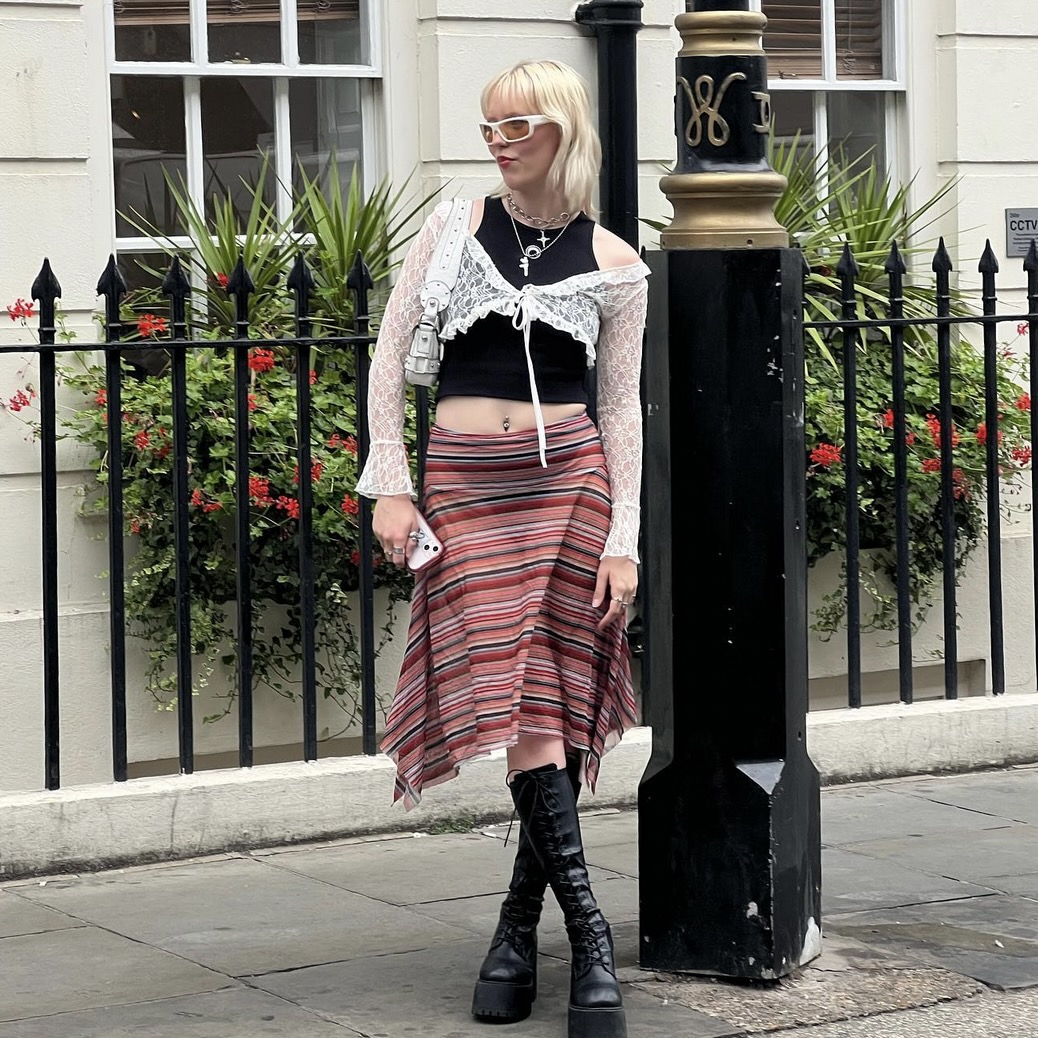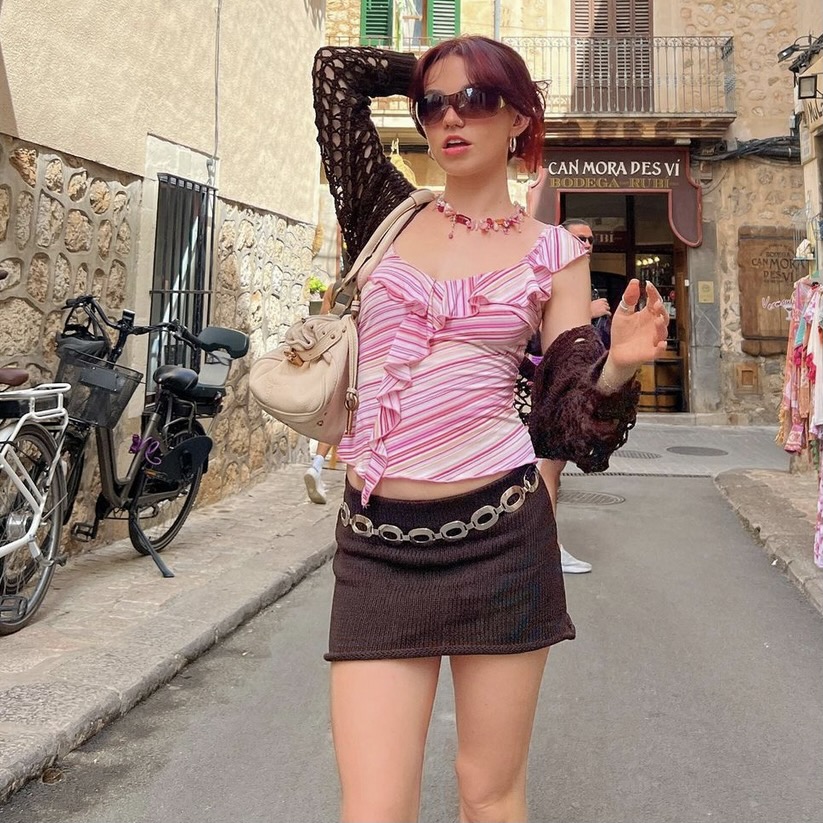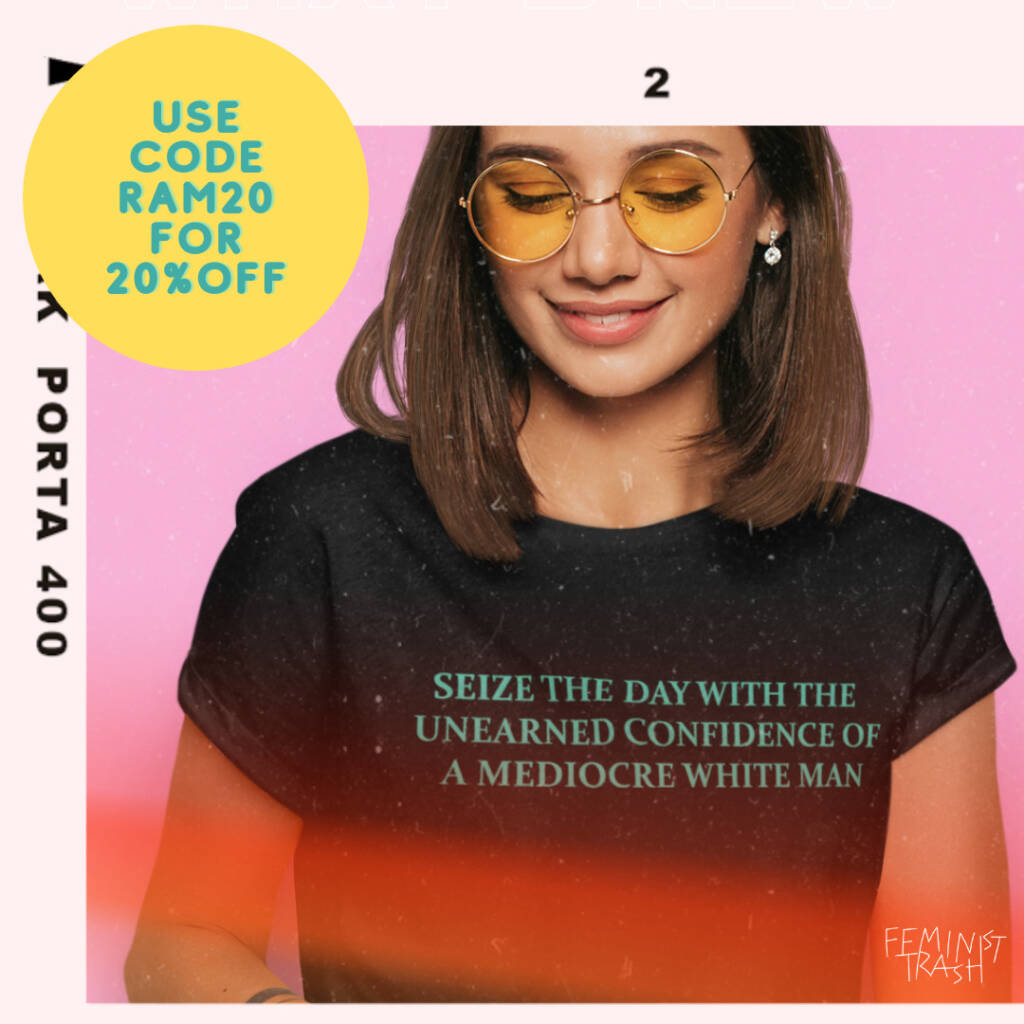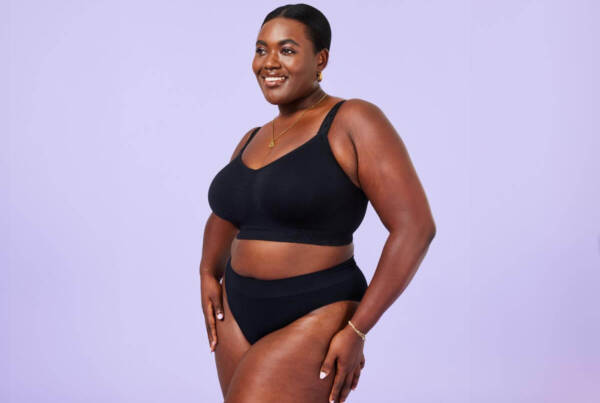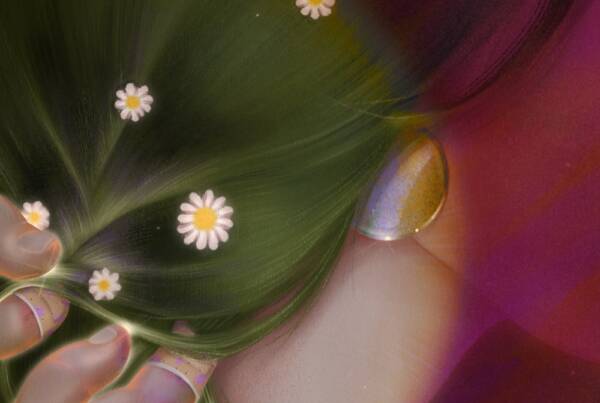Writing by Alyssa Forato // photograph by Laura May Grogan
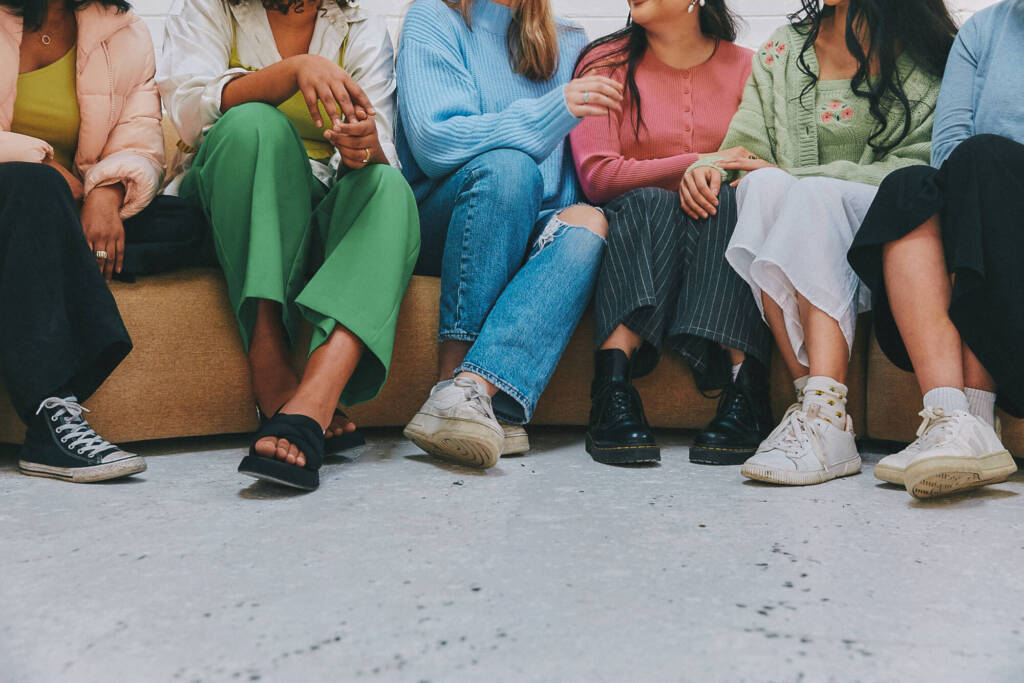 The number of sustainable fashion girlies, gays and theys (and we’ll give some credit to the guys too, I guess) is on the rise. People are flocking to op shops to get unique garments and achieve high-fashion looks while practising ethical fashion and sticking to a budget. In fact, people who rank higher on a style consciousness scale are more likely to shop sustainably.
The number of sustainable fashion girlies, gays and theys (and we’ll give some credit to the guys too, I guess) is on the rise. People are flocking to op shops to get unique garments and achieve high-fashion looks while practising ethical fashion and sticking to a budget. In fact, people who rank higher on a style consciousness scale are more likely to shop sustainably.
The resurgence of y2k, along with Melbourne’s distinctive, editorial style, means people have been turning to op shops to perfect their fits. Fashion content creators including Ebony Mai and Lara Adkins are just two of the style icons behind the driving force of this mismatched, colourful, thrifted era.
However, with trend culture moving so quickly, I can’t help but question whether op shopping will eventually be forgotten. As much as I’d love the sustainable queens to keep stealing the spotlight and doing their thing, is it only a matter of time before something newer or cooler takes its place?
I spoke to Senior Lecturer at RMIT’s School of Fashion and Textiles, Rebecca van Amber, to learn more about the growth in popularity of op shopping.
Why has op shopping become more popular amongst the younger generations?
That’s a really good question. I actually think it’s always been pretty popular. I think that there’s always been a certain group of people who are either looking for a bargain, or they’re looking for something really unique. There’s always been a certain selection of people that really enjoy vintage clothing in particular and engaging in vintage, and op shopping has historically been a good way to find vintage pieces.
In more recent years, op shopping is becoming more popular because people are gaining a bit of an awareness about the environmental impact of the fashion industry. Especially in Melbourne – there’s a certain demographic of people where there’s almost an op shopping look. It’s not just about sustainability, but it’s also about fashion, about having a look that is not really a mainstream sort of look.
What other forms of ethical, sustainable fashion have increased in popularity recently?
I think that there’s a lot more use of online platforms. I’ve never used Depop, but I know there’s sites like Depop, and people have obviously been using eBay for years. And in recent years we’ve seen a lot more people using Facebook Marketplace as a way to exchange goods. I think that we’ll see more of those sorts of sites, especially in the United States.
There’s some really big online sites that people use to swap clothing, other than just eBay. I don’t think we’ve seen that uptake quite as quickly here in Australia, but I think that we will, and that will gain popularity and grow.
Yeah, you’re definitely right about Depop. I am an avid Depop user, it’s such a good app and you don’t even need to spend that much time hunting before you can find some amazing pieces. Trend culture seems to be constantly changing, especially in the fashion industry. As soon as something comes into style, there’s often another item to take its place. Can you tell me why the trend cycle is moving so quickly now?
It has a lot to do with social media. Trends are coming up quite quickly – and I must acknowledge, my students are much more in tune to this than that I am. I’m not a huge user of TikTok, but there’s a lot of influencers on TikTok, and they spur a lot of these micro trends. Instagram as well; we know that there’s a lot of Instagram influencers. We know that the influencers get products for free, they get possibly 1000s of dollars of product for free. It’s very subversive advertising to those of us that are on social media.
Especially with these influencers, you see something and you can buy it straight away. So it means that there’s that really instant gratification and trend turnover. We’re so used to seeing new things all the time, especially on social media and now we have that same expectation from certain brands as well. It’s like, “oh, what’s new this week?” This expectation that you’re always going to go and see something new on their website, and that just is fueling this constant turnover.
I subscribe to a few fast fashion brand’s emails, and I swear multiple times a week I’ll get emails saying “hundreds of new styles dropped”. There’s a LOT of mass production. Do you think that op shopping and other forms of sustainable fashion are simply another part of this trend cycle or do you think that ethical fashion is here to stay? And not just op shopping, this includes ethical small businesses, markets and other types of sustainable fashion.
I think that it’s here to stay. Like I said before, there has always been a certain consumer who really enjoys secondhand shopping. And you know, it’s a very different shopping experience. When you’re op shopping you go in, and, if you’re lucky you find a treasure. There’s always been that kind of person who really enjoys that. But I think now, I do feel like there’s more of an awareness about the impacts of the fashion industry and hopefully there are some people that are starting to do a bit more op shopping or secondhand that hadn’t done it before.
I do think it is tricky. The thing that’s limiting about op shopping is that you never know what you’re going to get. There will always be a demand for the ability to go and be able to find a great pair of jeans off the shelf in a particular style or black trousers or a black dress, those basic things. But for people that are willing to put the time in and are happy to have a bit of fun with their wardrobe and fun hunting, op shopping is a really great option.
The thing that I’m concerned about with the op shopping is because we have so much fast fashion and so many cheap products on the market that are very low quality, those items don’t make it into the op shop. The more of those items that are produced, the less quality items are going to end up in the op shop because the things that we want to see in the shop are items that are in good condition. They’re really good quality, you can’t sell things in an op shop that have stains or holes or are all pilled, and we’re going to see more and more items like that because we have more and more items that are being produced at a really low quality. So that’s my concern about op shops – the longevity of op shops is simply due to the fact that clothing quality is going down.
That’s a really good point that not many people talk about. Do you think that faster fashion brands will ever improve the quality of their pieces in the future or do you think it’s going to keep going downhill?
That’s a really good question. I have noticed myself – and I’m not going to name any brands. There’s some brands that I used to buy 10 or 12 years ago and I still have items that were 100% merino wool and beautifully made. They’re still going strong, absolutely. They’re perfect. There’s no pills, the fabric quality is really good. And now I don’t think that brand even sells anything that’s 100% merino wool anymore.
The quality has really gone down in the past 10 years. For me, that’s really sad because that was a brand that I thought made pretty good items, and now I think of them as being nearly a fast fashion brand. And it’s very worrisome. It makes me very worried that brands are no longer making items that are quality and that you want to be wearing for 10 years or more.
Yeah, it’s definitely concerning. I know I bought a dress from a designer brand recently and because I was spending so much money, I thought it was going to be really good quality. And then when it arrived, I looked at the tag, which said polyester, and I was like: “I’ve spent so much money on something that is poorly made.” It’s really disappointing. Speaking of fast fashion and poor quality items, why is it important that we keep choosing to shop sustainably?
Especially now, I think it’s really hard because the cost of living is rising, so people potentially don’t have as much discretionary income to spend on clothing. There is going to be that real pressure to either buy something that is more affordable, but possibly people could turn to secondhand. But again, it’s really hard to buy secondhand if there’s no good quality items for an affordable price in the second hand stores. So that’s really challenging.
The more that we as consumers try and exercise our consumer buying power and try to purchase from those brands that we know are doing the right thing, that’s the best thing that we can do. We can try and make the better choice, try and buy from the ethical brand or the sustainable brand, try to avoid as much as possible buying from those brands that you know are really fast fashion and are just churning out hundreds or 1000s of styles every week. So avoid those brands.
You know, sometimes it hurts to pay a little bit more, but if you can buy from the brand that you know is at least trying to do a bit of the right thing and is generally making better choices then that’s the best thing you can do.


